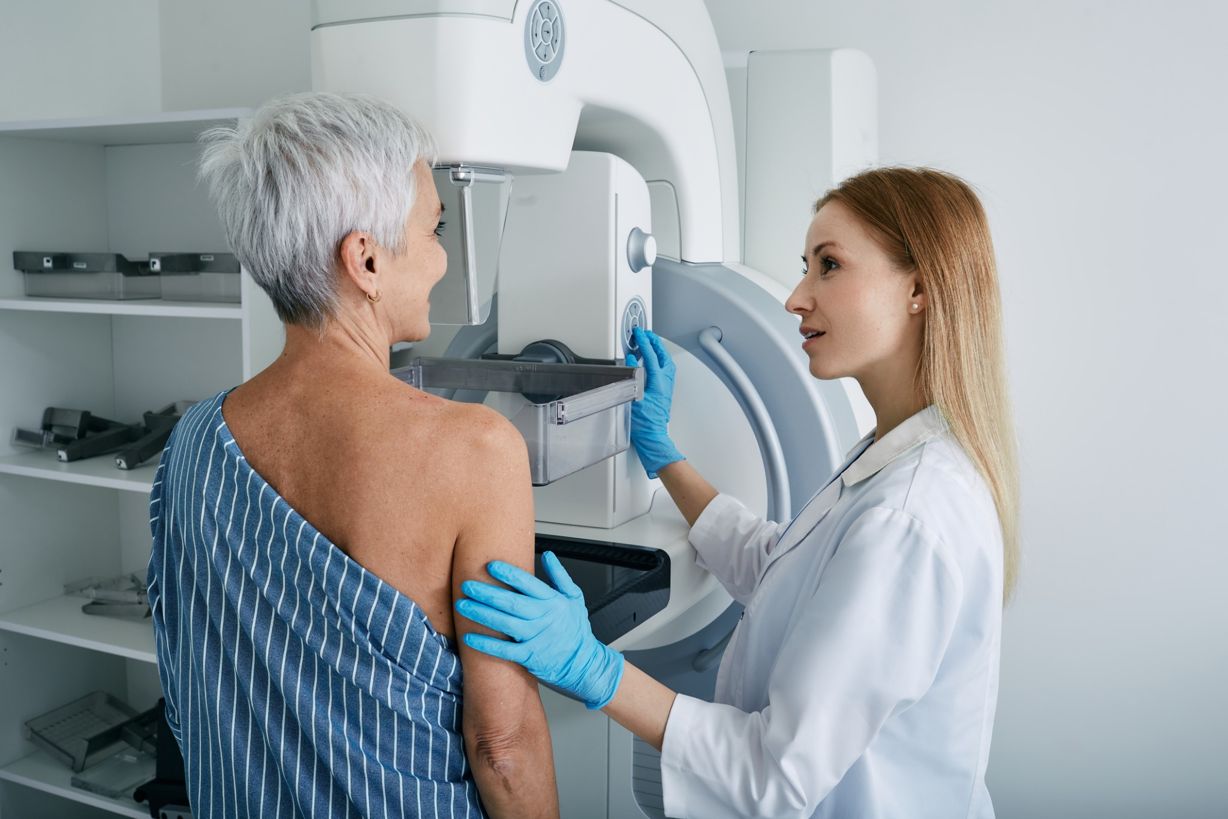News
What Does Breast Cancer Look Like in Its Early Stages?
October 21, 2025
Many people associate breast cancer with finding a lump, but in reality, early breast cancer can show up in many different ways – some of which are easy to overlook.
Here are several symptoms that may indicate early breast cancer:
A new lump or mass: While not all lumps are cancerous, a painless, hard lump with irregular edges should always be checked.
Changes in breast size or shape: Swelling in part of the breast, or one breast appearing noticeably different than the other, can be early signs.
Skin irritation or dimpling: Sometimes described as looking like an orange peel, this can indicate changes beneath the surface.
Nipple discharge: Especially if it’s bloody or comes from only one breast.
Redness, scaling, or thickening: These changes to the skin or nipple may resemble an infection or rash, but shouldn’t be ignored.
Persistent breast or nipple pain: If pain is consistent and not tied to your menstrual cycle, bring it up with your doctor.
It’s also important to note that not all early breast cancers cause symptoms. That’s why screening is essential.
Who Should Be Screened?
Screening recommendations vary based on age and risk factors. Most women should get their first mammogram at age 40 and continue regular screenings based on their provider’s recommendations.
You may need to begin screenings sooner if you’re at a higher risk of developing breast cancer. Important risk factors include genetic mutations (like BRCA1/2), having dense breasts, a family history of breast cancer, a lack of physical activity, and being overweight after menopause, among others.
Your provider can help you understand your personal risk and create a screening plan that’s right for you.
Don’t Wait to Take Action
October is Breast Cancer Awareness Month – an important reminder to stay proactive with your breast health. If you’ve been putting off a breast exam or mammogram, now is the time.
Early action is empowering. Knowing the signs, listening to your body, and getting screened can save lives – maybe even yours.
The Importance of Knowing Your “Normal”
No two bodies are exactly the same. That’s why it’s important to understand what’s typical for your own breasts – how they look, feel, and respond during your menstrual cycle. The more familiar you are with your baseline, the easier it will be to notice when something’s off.
Risk Doesn’t Equal Diagnosis
Having a risk factor, like a family history of breast cancer, doesn’t mean you’ll get the disease. Similarly, some people with breast cancer have no identifiable risk factors. The key is to be proactive. Regular checkups and breast awareness can help ensure any concerns are caught early.
More Than Awareness: It's About Action
October is a time of powerful awareness campaigns, but it's also a reminder to act. That could mean scheduling your first mammogram, encouraging a loved one to get checked, or simply educating yourself about symptoms. Every step counts.
